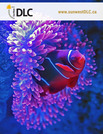
Biology 30 - The Respiratory System Part 4
- Subject:
- Biology
- Author:
- Distance Learning Centre
- Date Added:
- 04/12/2018

Biology 30 - The Respiratory System Part 4

This 21-minute video lesson looks at the pulmonary system including the lungs, larynx, trachea, bronchi, bronchioles, alveoli and thoracic diaphragm. [Biology playlist: Lesson 37 of 71].

Every time you take a breath, oxygen makes it way into your lungs. Follow along on that journey! Rishi is a pediatric infectious disease physician and works at Khan Academy.

This lesson describes how the circulatory system works, including the heart, blood vessels and blood. Students learn about the chambers and valves of the heart, the difference between veins and arteries, and the different components of blood. This lesson also covers the technology engineers have developed to repair the heart if it is damaged. Students also understand how the circulatory system is affected during spaceflight (e.g., astronauts lose muscle in their heart during space travel).

Students explore the inhalation/exhalation process that occurs in the lungs during respiration. Using everyday materials, each student team creates a model pair of lungs.

This site provides information about heart, lung, and blood diseases and sleep disorders. Learn how the heart works. Find out about aneurysms, angioplasty, electrocardiograms, heart attacks, high blood pressure, asthma, cystic fibrosis, sickle cell anemia, insomnia, narcolepsy, and more.

This lesson goes over the parts of the human respiratory system and the gas exchange process that occurs in the lungs. It also covers changes in the respiratory system that occur during spaceflight, such as decreased lung capacity.

There are three lessons in this group. The first two provide students with the opportunity to learn about the circulatory system and conduct an experiment where they take their pulses after different types of activity. During the third lesson, a pediatrician explains how she checks a patient's heart and the ways that a healthy lifestyle (food and exercise) can keep students' hearts healthy.